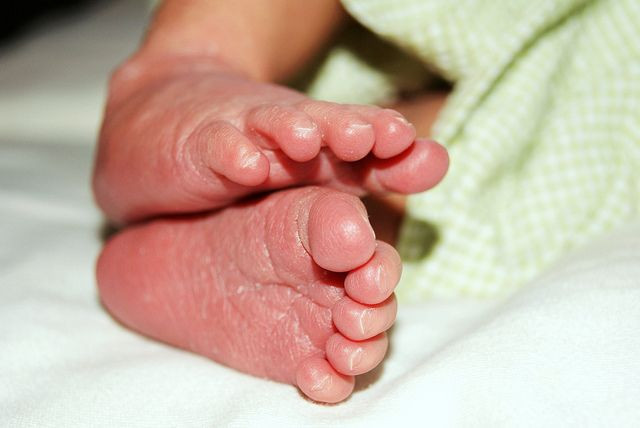3D-Printed Head Helps Doctors Determine How To Save Baby's Life During Birth, Could Prevent Future Pregnancy Complications

When it comes to pregnancy, there are many things that can go wrong from conception until birth — and beyond. Thankfully, science has taken great strides in making pregnancy safe for both the mother and the newborn. A recent case study, published in Pediatrics, describes how 3D printing was able to help one Michigan mom after experiencing a big surprise during her 30-week ultrasound.
During her ultrasound, Megan Thompson learned her child had a walnut-sized lump on his face that would prevent him from breathing once he was born. She was referred to the University of Michigan's C.S. Mott Children's Hospital, where doctors would decide whether her son, Conan, would be delivered via C-section or through a rare and complex procedure. Turns out 3D printing helped make their decision easier.
The doctors used a specialized MRI to scan the fetus inside the womb, then used that scan in a 3D printer to create multiple models of little Conan’s face. These models would allow them to determine where exactly the soft tissue mass was and how dangerous it could be to the baby.

"Based on the images we had, it was unclear whether the mass would block Conan's airway after birth. The 3D-printed model of the fetus allowed us to actually see in person what it looked like and have something in our hands to help us decide the best way to care for the baby," said senior author Dr. Glenn Green, associate professor of pediatric otolaryngology at C.S. Mott Children's Hospital, in a press release.
Using the 3D-printed models, the doctors were able to avoid an ex utero intrapartum treatment procedure, which would have involved a partial delivery of Conan while he was still attached to the placenta via the umbilical cord. The procedure would have allowed doctors to open an airway for Conan to breath from, but instead, he was delivered through C-section. “I was relieved that I didn't need the more complicated and risky surgery and could be awake for the birth of my first baby,” Thompson said. “I'm glad that what they did for Conan may help other babies and their families in similar situations."
Green stated this is the first case he was aware of in which 3D printing was used to make a clinical decision regarding how severe an airway risk in a fetus was. According to Green, for more complex births in the future, 3D printing will be an invaluable tool. And in fact, the University of Michigan is already working on 3D-printed splints for babies with with severe tracheobronchomalacia, which prevents normal breathing and can occasionally collapse the windpipe.
Source: Green, G, et al. Antenatal Three-Dimensional Printing of Aberrant Facial Anatomy Pediatrics . 2015.



























